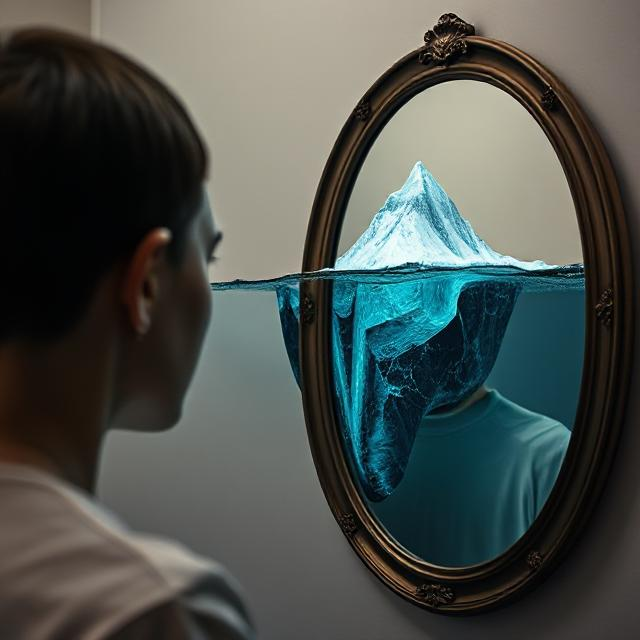A computer is an extraordinary tool that can be useful in the hands of a skilled user. Here I seek to understand and help the most important part of us. The mind. And now, what are we as people? We are essentially our minds, though they are built from neurons. We cannot read another person’s neural structures, a matter that would be expensive and useless. And even have difficulty understanding our own, but we can find linguistic communication conventions that help us manage our minds. An indispensable intermediary here is the computer.
We often look in a mirror. We might do it to prepare for a date, or simply out of curiosity about our appearance. We adjust our posture and positions. Looking in the mirror, when not done in a narcissistic way, is an attempt at self-correction. However, the most important aspects of ourselves remain unseen, like the submerged part of an iceberg. These unseen aspects reside in our minds, perhaps what we once called the “soul,” but I prefer to refer to it as “mental.” Imagine the advantage of being able to visualize our mental state, much like we see our physical reflection in a mirror. This isn’t science fiction, but an attempt that we submit for your critical evaluation. My approach combines elements of novelty, a re-organization of established and current knowledge, and the use of AI to generate text, image, video or sound. What I present here is limited for demonstration purposes and does not represent a complete work.

We are essentially our minds, and our minds are linguistically structured. By encoding words and their interactions, we can achieve a simulation of our minds, and yes, we don’t forget that each of us is different. Some ideas on the results that can be achieved: S.Y.S. (See your soul), Little Things (help now), Nostradamus (help in the future) and mClone (help for eternity).
This is an approximation, and like seeking a clearer mirror to see yourself, it can be improved. I’ve compiled a list of carefully selected words, to which you’ll attach your own data points. This creates a structure—a graph of your mind—limited by the provided material. We then identify the relationships between these words as they appear in your mental landscape and, using artificial intelligence, generate what we call a “mindgraphy” for you. The information within this mindgraphy is specific to the time when you complete the form, and you’ll be the one who best understands the resulting image. Ultimately, it’s an individual exercise, but you can use this information to make adjustments in your mindset.
